Introduction
Keeping your furry friend looking and feeling their best is an important part of responsible pet ownership. Regular dog grooming not only helps maintain their hygiene but also promotes a healthy and happy life. In this article, we will delve into the world of dog grooming, providing you with valuable insights and tips.
The Benefits of Dog Grooming
Grooming goes beyond just aesthetics. It helps prevent matting, reduces shedding, and keeps your dog’s coat healthy and shiny. Regular grooming also allows you to spot any skin issues, parasites, or lumps early on, ensuring timely veterinary care if needed.
Essential Dog Grooming Tools
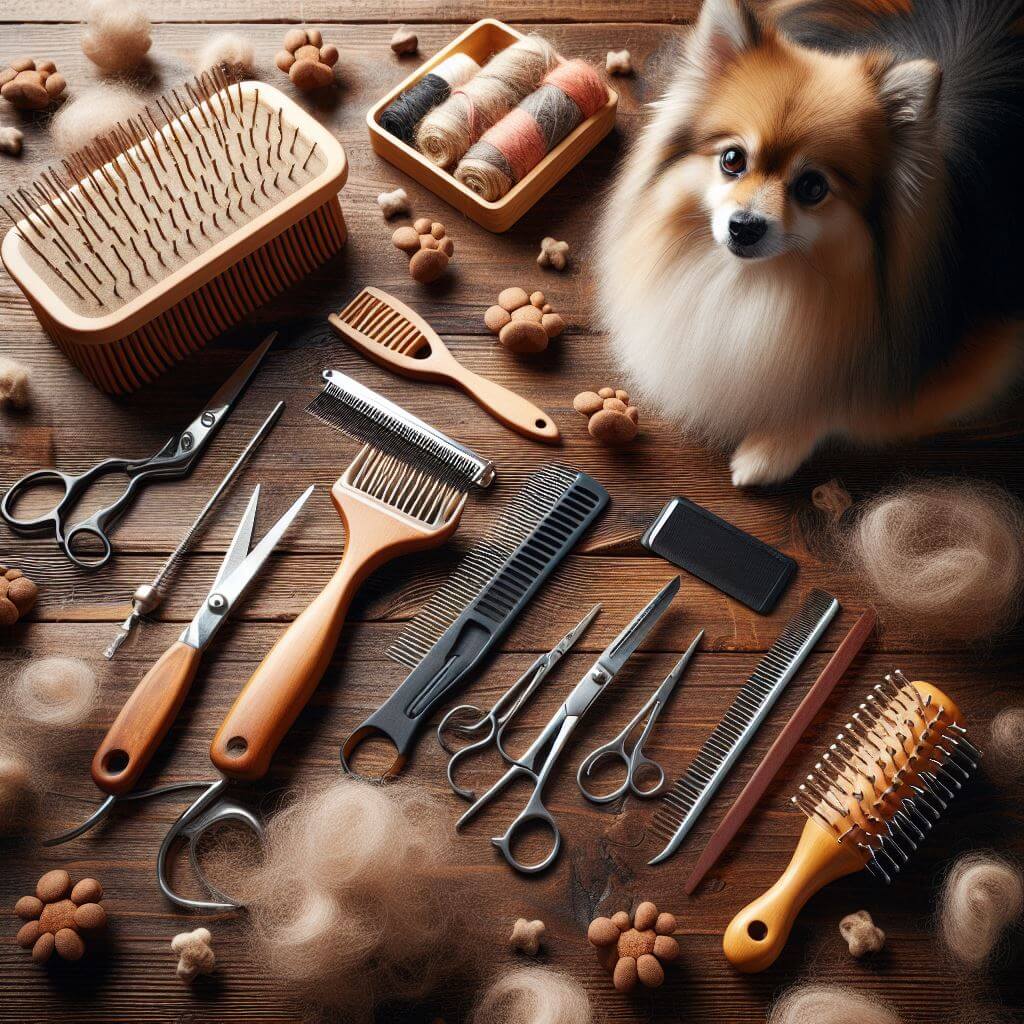
There are several tools that you should have on hand for grooming your dog:
- Brushes and Combs: These are essential for removing tangles and mats from your dog’s coat.
- Dog Shampoo and Conditioner: Always use a shampoo and conditioner designed for dogs.
- Nail Clippers: Regular nail trims are important to prevent overgrowth and splitting.
- Ear Cleaner: Regular ear cleaning can help prevent infections.
- Toothbrush and Toothpaste: Dental health is an important part of your dog’s overall health.
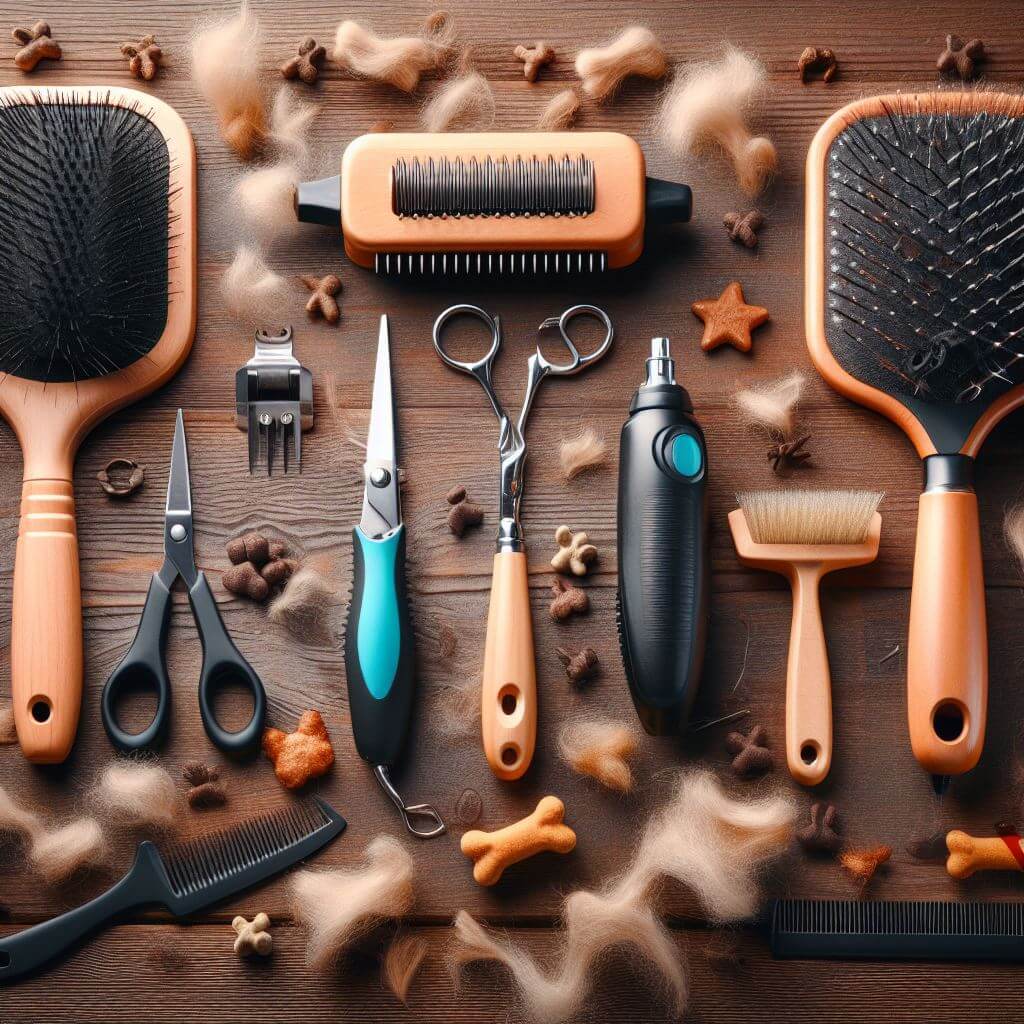
The Grooming Process
Bathing Your Dog
Bathing your dog should be done regularly, but not too frequently as it can dry out their skin. Always use a dog-specific shampoo and conditioner, and make sure to rinse thoroughly.
Brushing Your Dog’s Coat
Brushing your dog’s coat helps to remove dead hair, dirt, and prevents matting. The frequency of brushing will depend on your dog’s breed and coat type.
Cleaning Your Dog’s Ears
Regular ear cleaning is important to prevent ear infections. Use a vet-approved ear cleaner and avoid inserting anything into your dog’s ear canal.
Trimming Your Dog’s Nails
Regular nail trims are important to prevent overgrowth and splitting. If you’re unsure about doing this yourself, consider having it done by a professional groomer or vet.
Professional Grooming
While regular home grooming is essential, professional grooming services can be a valuable addition to your dog’s grooming routine. Professional groomers have the skills and equipment to groom your dog safely and efficiently.
What are some common grooming mistakes to avoid?
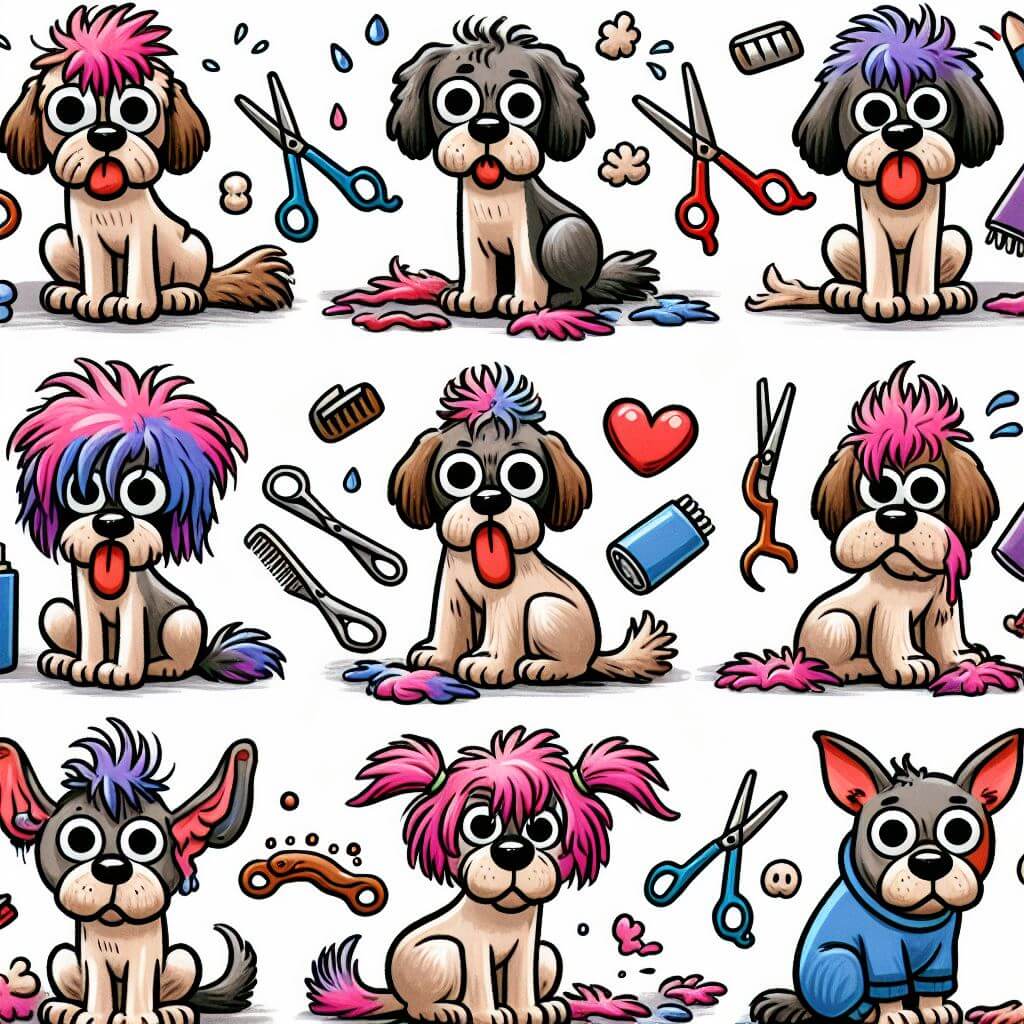
Here are some common grooming mistakes to avoid when grooming your Aussiedoodle:
- Not Brushing to the Skin: One of the biggest mistakes Aussiedoodle owners make when grooming is brushing over the top of the hair and not getting down to the skin. Using a slicker brush, begin by brushing against the lay of the coat once or twice. Then brush through layer after layer making sure you’re brushing in the direction it grows.
- Not Understanding the Fur Type: It’s important to understand the type of fur your Aussiedoodle has. These pups can have tight poodle curls, wavy, shaggy locks that don’t shed much, or straight-up straight Australian Shepherd hair. Once you understand where your pup’s coif is at, you’ll be able to deal with it more appropriately.
- Not Brushing Regularly: Brush this breed at least weekly, though daily is better.
- Bathing Too Often: If you bathe your Aussiedoodle too often, it can dry out its skin and cause it to lose its natural oils. If this happens, they may experience itching and scratching worse than before the bath.
- Using the Wrong Shampoo: When bathing your Aussiedoodle, use a dog shampoo formulated for their coat type. This will ensure you are not stripping natural oils or causing any damage. You should also avoid using human shampoos, as they are typically too harsh on your dog’s skin and may contain irritating fragrances.
Remember, every dog is unique and what works for one might not work for another. It’s always best to consult with a professional groomer or your vet if you’re unsure about anything. Happy grooming! 🐾
How do I groom my dog ears?
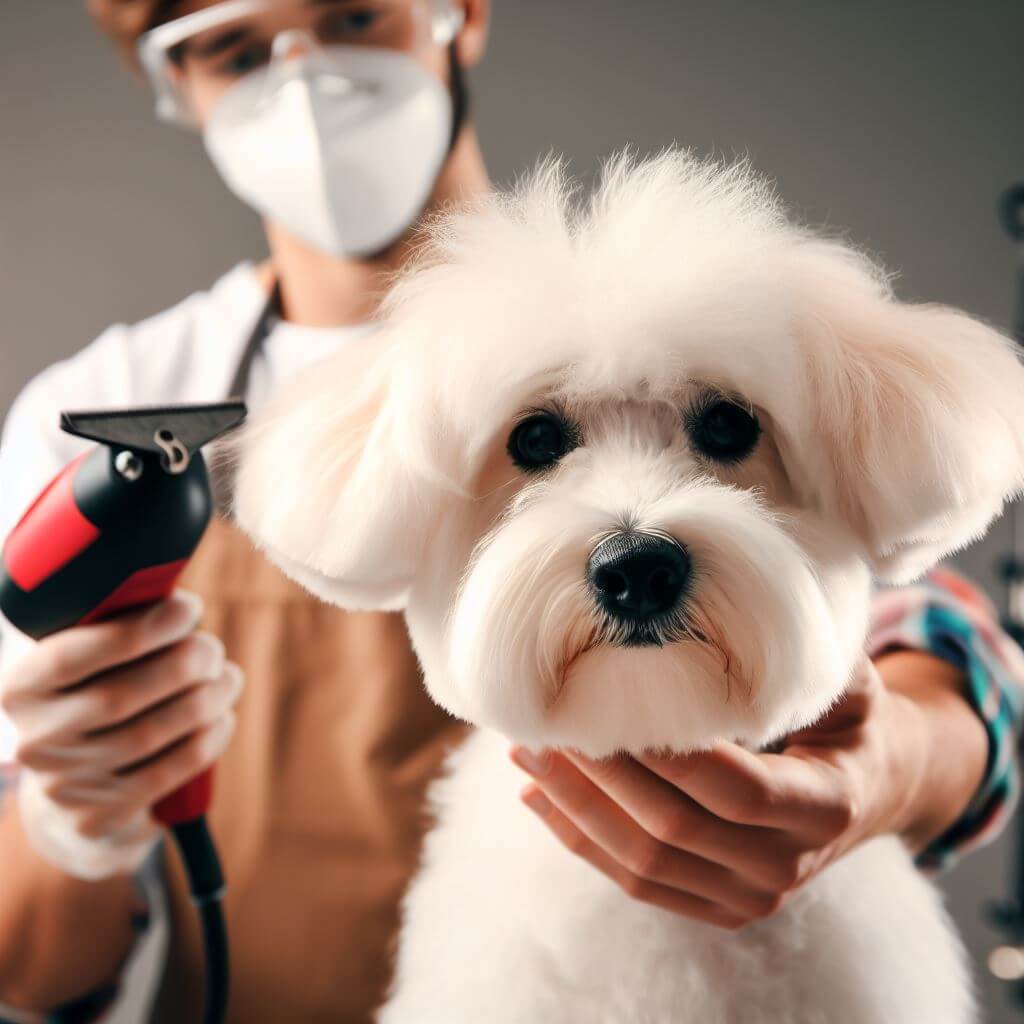
Grooming your dog’s ears is an important part of their overall grooming routine. Here are some steps to guide you:
- Check the Ears: Regularly check your dog’s ears for any signs of infection or parasites. Look for redness, swelling, or a bad smell.
- Clean the Ears: Use an ear cleanser designed specifically for dogs. Gently massage it into their ears before wiping away any excess dirt or wax buildup with a cotton ball or cloth.
- Dry the Ears: After bathing your dog, make sure to dry their ears thoroughly. You can do this by gently rubbing a towel over them.
- Pluck the Ears: If your dog has a lot of hair in their ears, you may need to pluck it. Plucking your dog’s ears allows your dog’s ears to breathe and is a good way to prevent ear infections and yeast build up. However, if you think your dog’s ears need to be plucked, it’s recommended to consult your vet before plucking.
- Trim the Ears: Trimming the bottoms of your dog’s ears gives the ear a more natural look. Feel for the bottom of the ear leather before you trim.
Here are a couple of YouTube videos that can guide you through the process:
- How to Pluck Dogs Ears: This video by “Furry Friends Zone” provides a detailed guide on how to properly pluck your dog’s ears from a professional dog groomer.
- How to Trim Dogs Ears: This video by “Love of Grooming” provides a step-by-step guide on how to trim the bottoms of your dog’s ears.
Remember, if you notice any signs of infection or discomfort in your dog’s ears, it’s best to consult with a vet. Never insert anything into your dog’s ear canal, as this can cause damage1. Happy grooming! 🐾
What are some common grooming tools that I should have on hand?
Here are some common grooming tools that you should have on hand for your Aussiedoodle:
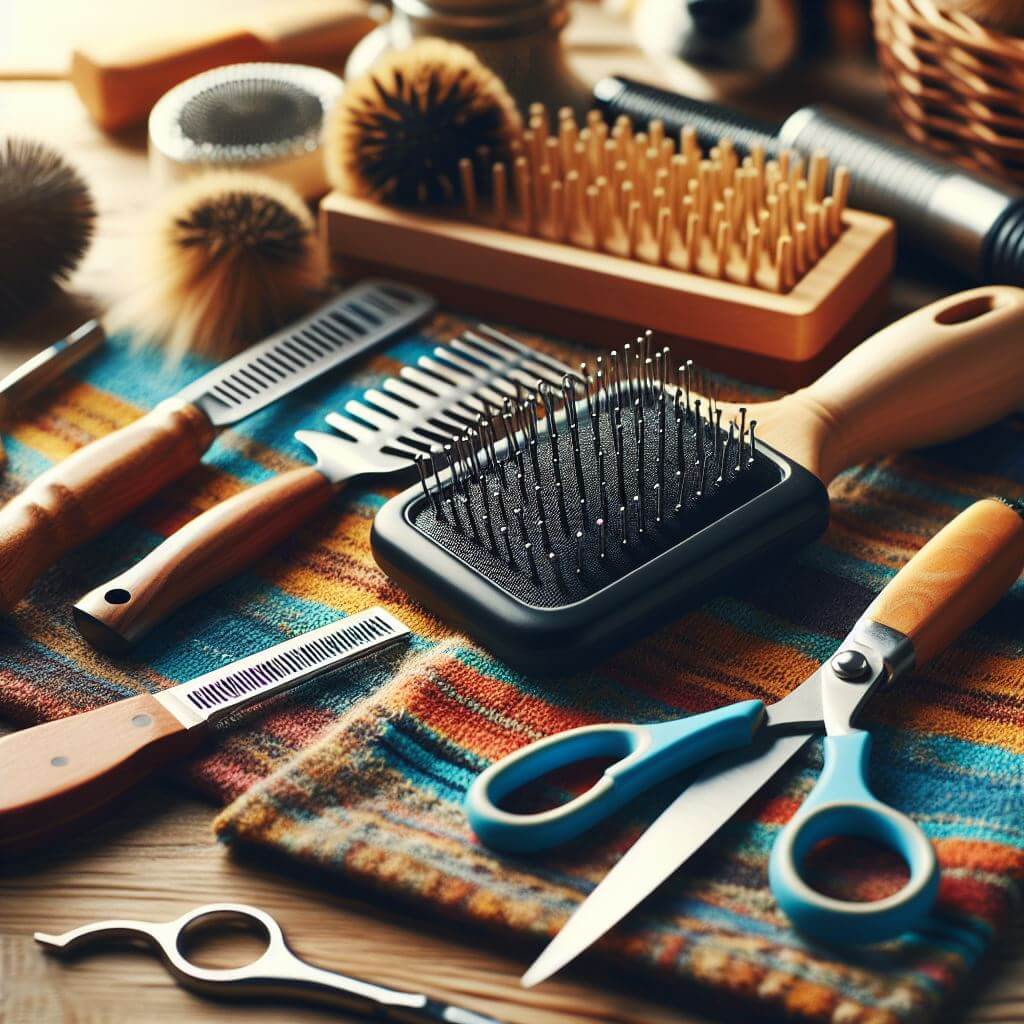
- Brushes: Different brushes are available for dogs based on their coat type. Slicker brushes are small bristle brushes with a handle that can be used on long and short hair. They are one of the most popular choices for Aussiedoodle owners. These brushes feature fine, short wires closely spaced together and are perfect for removing tangles, knots, and loose hair. Slicker brushes are suitable for all coat types, especially for Aussiedoodles with wavy or curly hair.
- Dog Shampoo and Conditioner: When bathing your Aussiedoodle, use a dog shampoo formulated for their coat type. This will ensure you are not stripping natural oils or causing any damage. You should also avoid using human shampoos, as they are typically too harsh on your dog’s skin and may contain irritating fragrances.
- De-shedding Tool: If your dog has a very thick coat, you may also want to consider using a de-shedding tool. This will help you remove any loose hair from the undercoat without having to comb through it manually.
- Dog Clipper: The dog clipper is one of the best tools you can use for grooming because it saves time and ensures that you get a neat finish.
- Nail Trimmer: Trimming your dog’s nails should be done regularly so that they don’t overgrow and cause injury to themselves or others around them.
Remember, every dog is unique and what works for one might not work for another. It’s always best to consult with a professional groomer or your vet if you’re unsure about anything. Happy grooming! 🐾
What are some common health issues with dogs that require special grooming?
There are several health issues in dogs that may require special grooming attention:
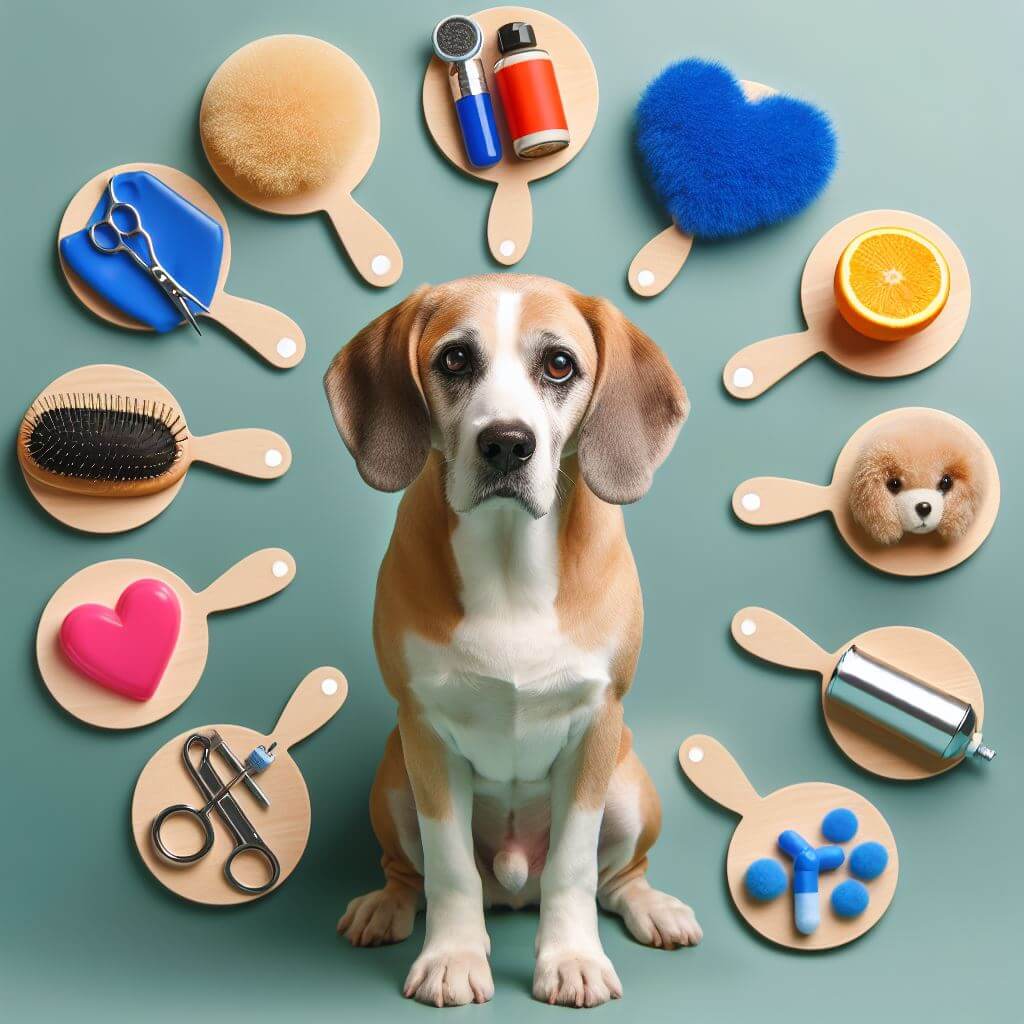
- Cysts: These are sacs filled with fluid, air, or other material. They can develop anywhere on your dog’s body and can hide under fur.
- Bad Skin Conditions: These can include a variety of issues such as dry skin, allergies, and dermatitis.
- Ear Infections: Dogs with long or floppy ears are more prone to ear infections and may require regular ear cleaning.
- Parasites: Fleas and ticks can hide in your dog’s fur and cause a variety of health issues.
- Dental Issues: Regular teeth brushing can help prevent dental diseases.
- Skin Infections: These can occur due to a variety of reasons, including allergies, parasites, and underlying health conditions.
- Seborrhea: This is a skin condition that causes greasy, flaky skin.
- Growths: These can include benign growths like warts and lipomas, or malignant growths like cancerous tumors.
- Feet Issues: Dogs can suffer from a variety of foot problems, including nail issues, paw pad injuries, and infections between the toes.
Remember, regular grooming can help detect these issues early, allowing for prompt treatment and potentially preventing more serious problems. If you notice any abnormalities during grooming, it’s important to consult with a vet1. Happy grooming! 🐾
Why dog grooming matters
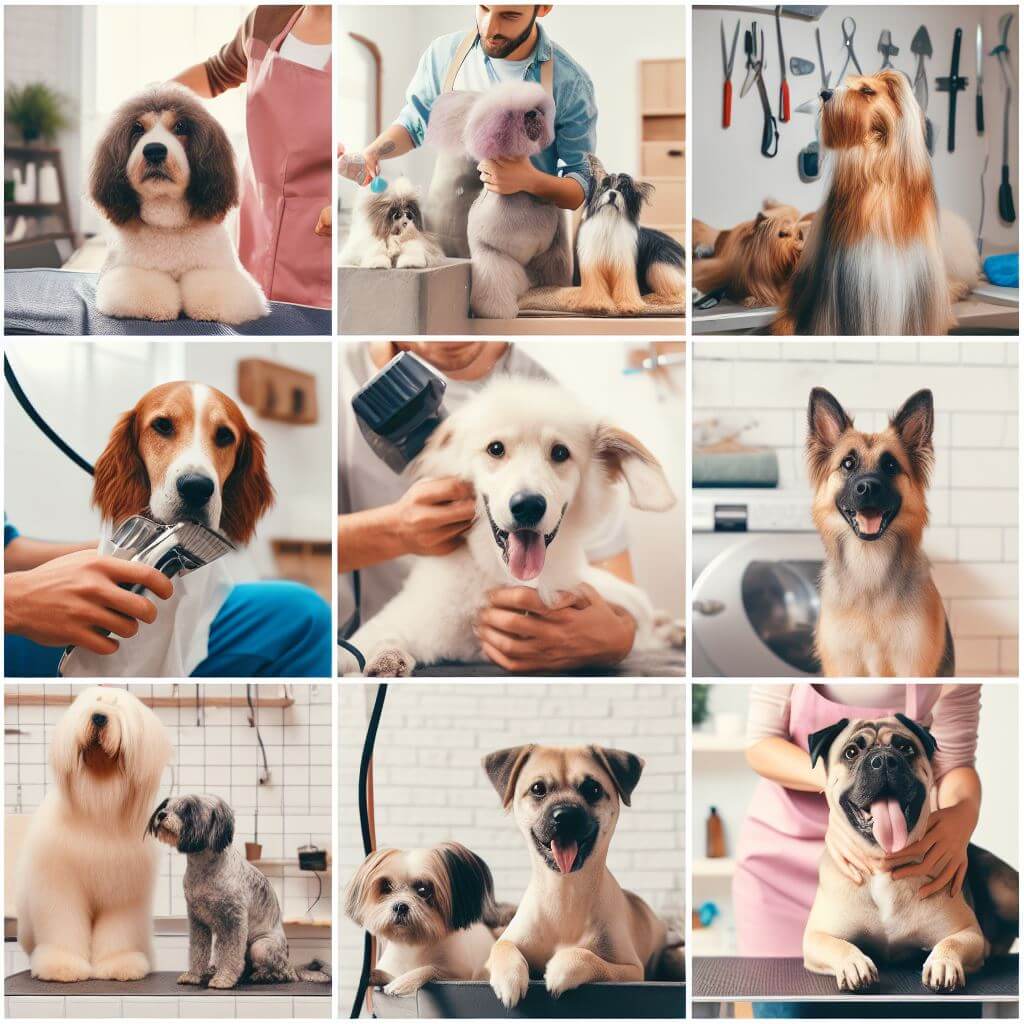
Dog grooming is an essential part of pet ownership. It not only helps in keeping your dog looking attractive, but also contributes to their overall health and wellbeing. Here are some reasons why dog grooming matters:
- Health Check: Regular grooming allows you to check for any abnormalities such as ticks, fleas, dry patches, or issues with your dog’s teeth, nails, ears, and eyes. Early detection of these issues can lead to quicker treatment.
- Hygiene: Regular grooming helps to remove dead hair, dirt, and dandruff. It also helps to control parasites.
- Prevents Health Issues: Regular grooming can help prevent skin conditions and other health issues. For example, matting can cause skin irritation and not grooming your dog’s nails can lead to long term health issues.
- Bonding Time: Grooming is a great way to bond with your dog. It can help to build trust and form a closer relationship.
- Appearance: Regular grooming keeps your dog looking their best. It can also reduce the amount of hair shed around your home.
- Comfort: Grooming not only makes your dog look good, but it also makes them feel good. Mats can be uncomfortable and even painful for dogs. Regular brushing removes mats and keeps your dog’s fur soft and clean.
Remember, every dog is unique and what works for one might not work for another. It’s always best to consult with a professional groomer or your vet if you’re unsure about anything. Happy grooming! 🐾
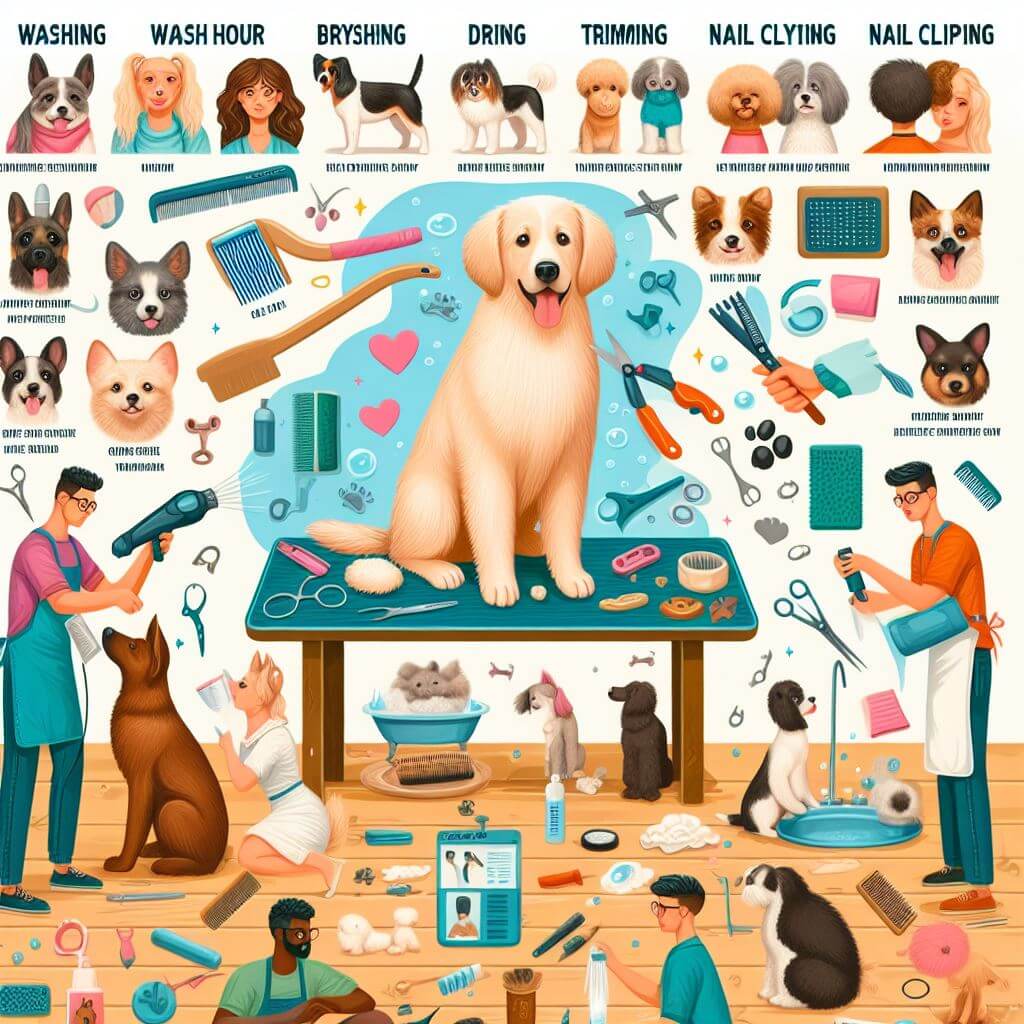
- Set the Tone: Make sure the environment is calm and comfortable for your dog.
- Choose the Right Grooming Tools: Depending on your dog’s coat, you may need different types of brushes or combs.
- Gather and Set Up Supplies: Have everything you need at hand before you start.
- Eyes, Ears, and Nose: Check these areas for any signs of infection or parasites.
- Brush Your Dog’s Pearly Whites: Dental health is an important part of your dog’s overall health.
- Brush Your Dog’s Coat: Regular brushing helps to remove dead hair, dirt, and prevents matting.
- Give a Pawicure: Regular nail trims are important to prevent overgrowth and splitting.
Rub-a-dub-dub: Bath your dog regularly, but not too frequently as it can dry out their skin.
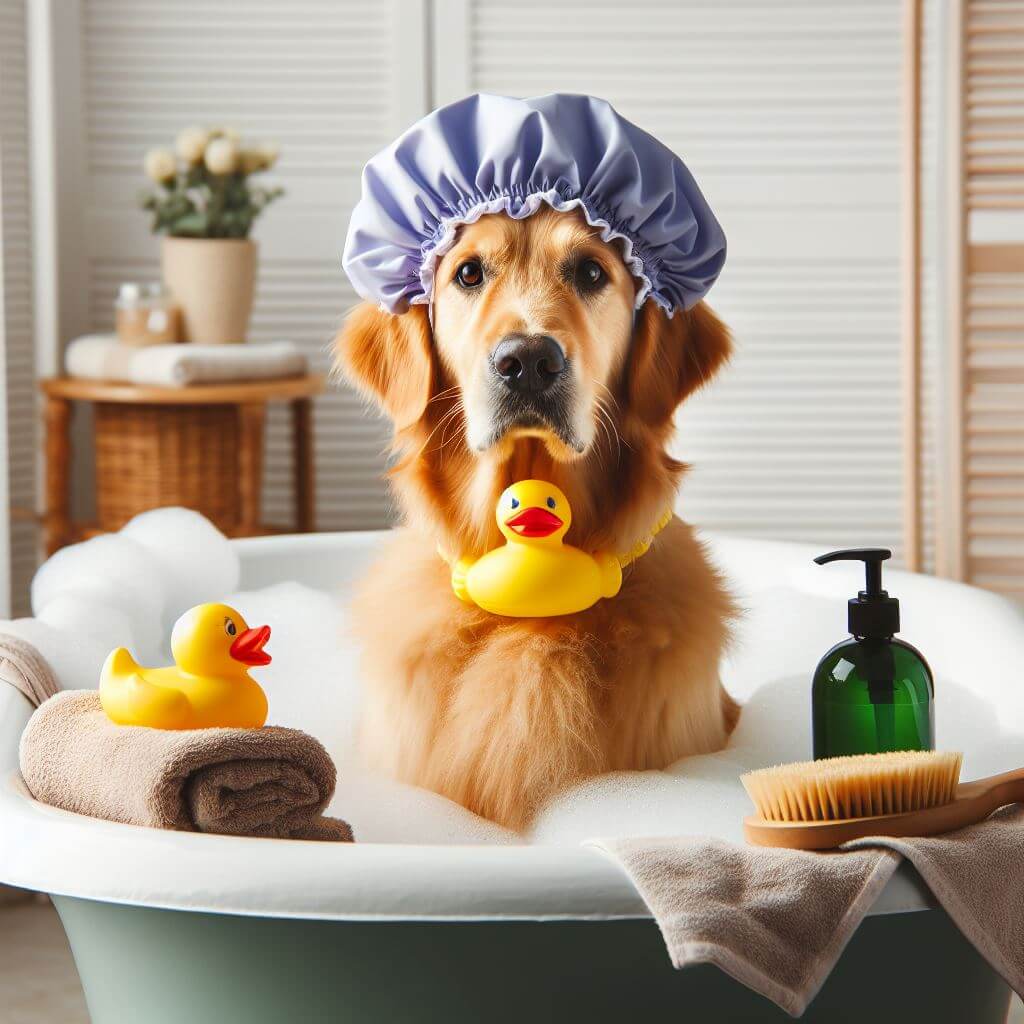
Remember, every dog is unique and what works for one might not work for another. It’s always best to consult with a professional groomer or your vet if you’re unsure about anything. Happy grooming! 🐾
For more detailed guidance, you can check out this guide on how to groom your dog at home. There are also several YouTube videos available that provide detailed guides on various aspects of dog grooming. These include videos on how to pluck and trim your dog’s ears.

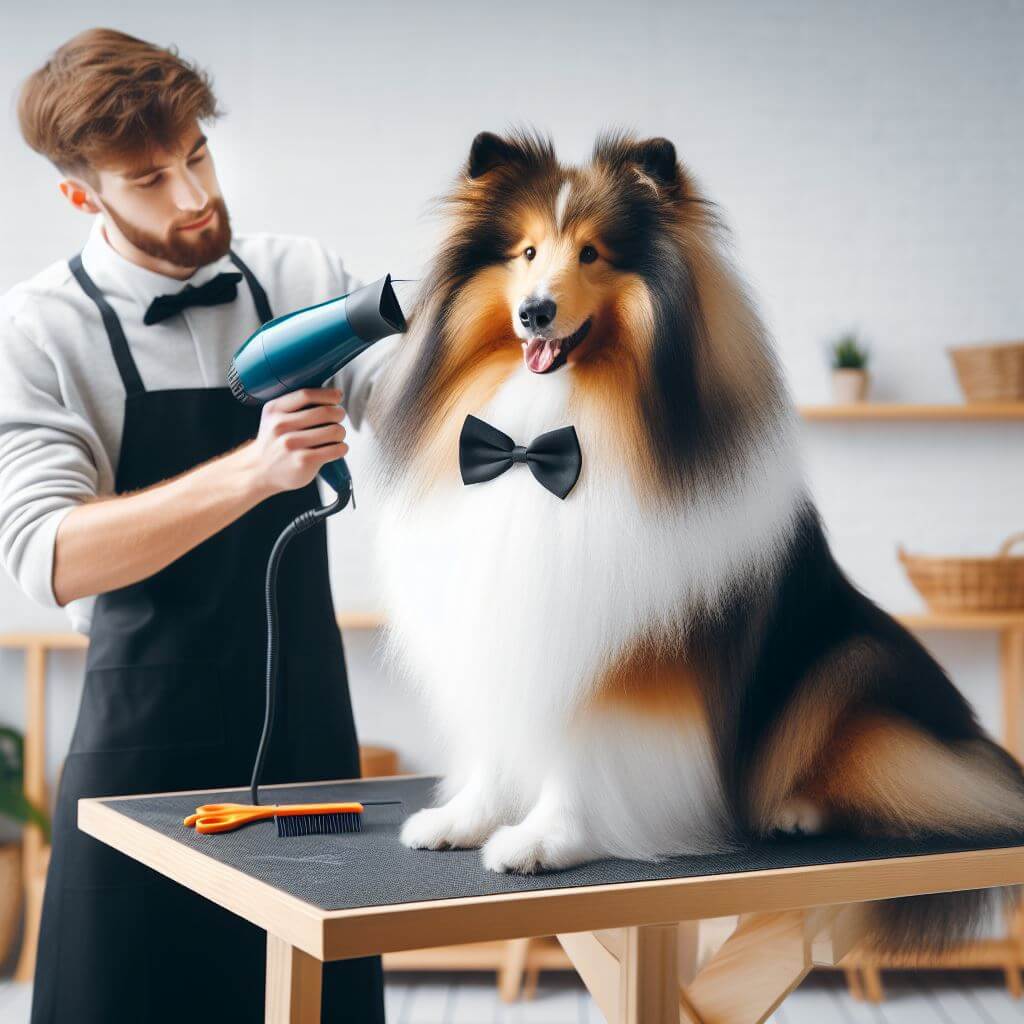
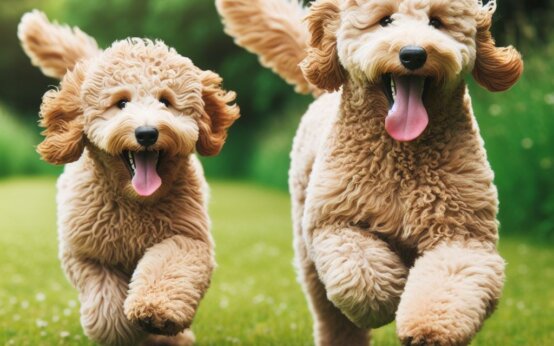 All About F1 Labradoodles: A Crossbreed with Charm
All About F1 Labradoodles: A Crossbreed with Charm 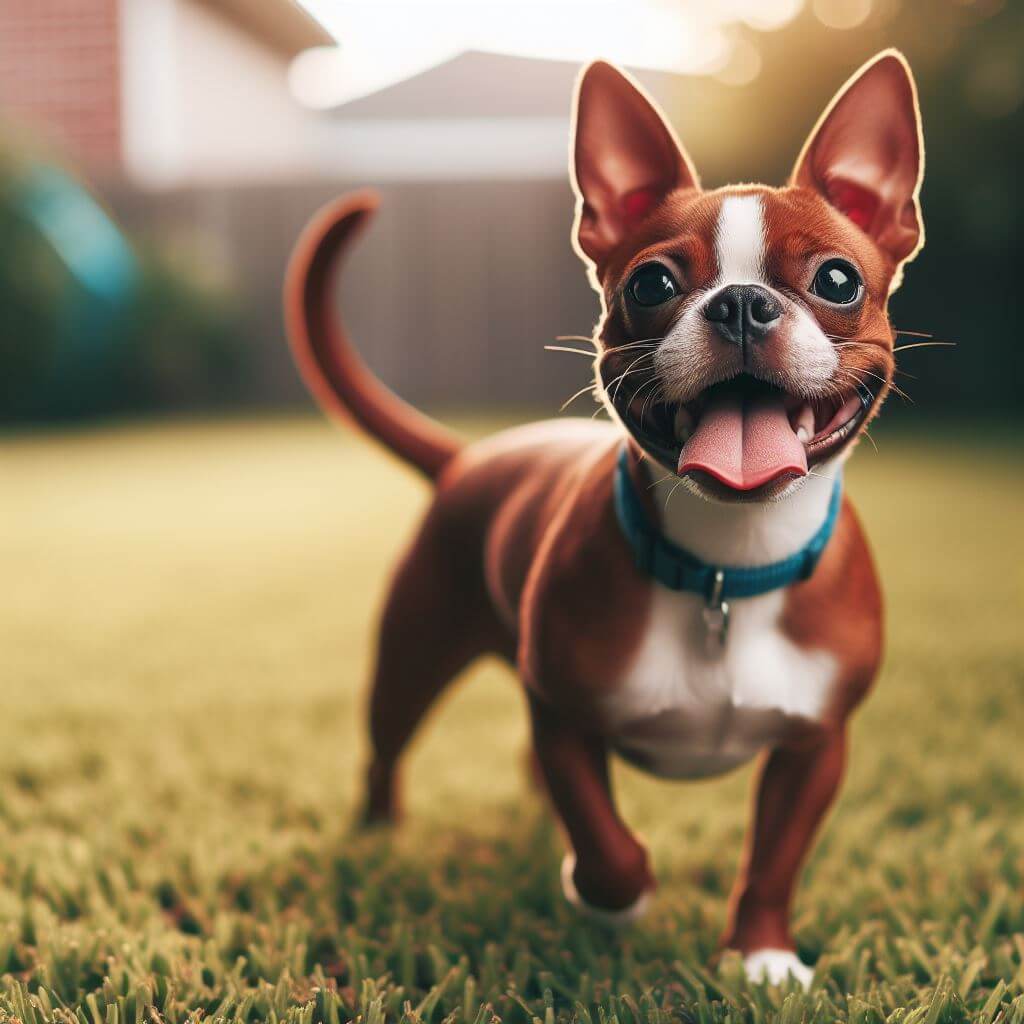 Red Boston Terrier: A Dog Lover’s Guide
Red Boston Terrier: A Dog Lover’s Guide 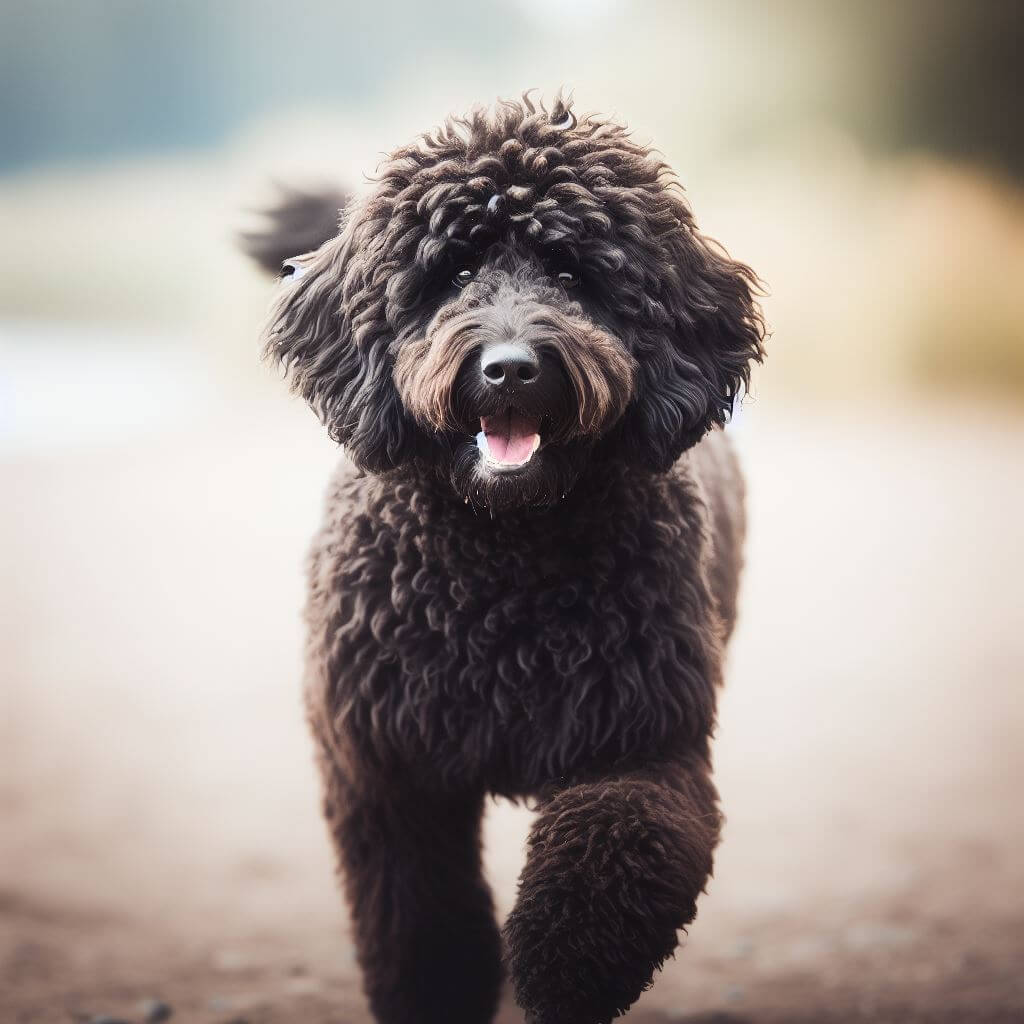 Newfiedoodle: A Comprehensive Guide in 2023
Newfiedoodle: A Comprehensive Guide in 2023 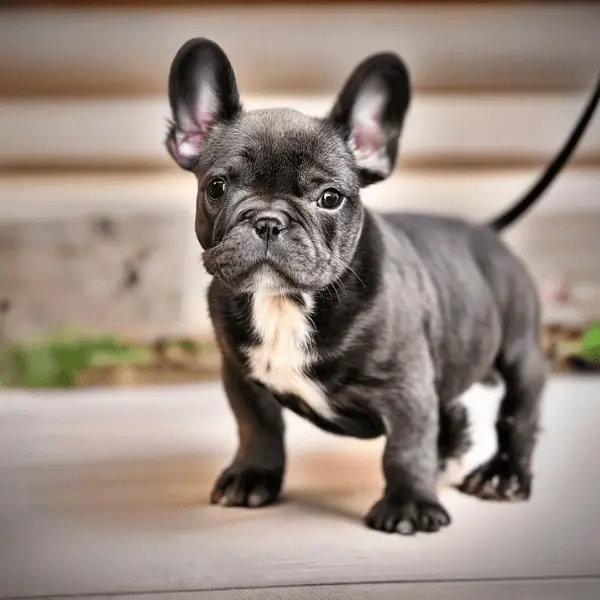 French bulldogs Everything You Need to Know About
French bulldogs Everything You Need to Know About  Mini Labradoodle: A Complete Guide
Mini Labradoodle: A Complete Guide  Dapple Dachshund: A Unique and Lively Breed
Dapple Dachshund: A Unique and Lively Breed  Pocket Pitbull: A Compact Canine Companion
Pocket Pitbull: A Compact Canine Companion  Preparing for an Adventure: A Golden Retriever Packs Its Suitcase
Preparing for an Adventure: A Golden Retriever Packs Its Suitcase 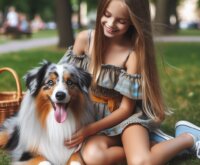 The Blue Merle Australian Shepherd: A Captivating and Unique Breed
The Blue Merle Australian Shepherd: A Captivating and Unique Breed 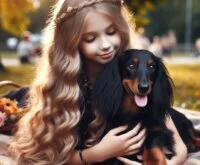 Long Haired Dachshund: A Guide to This Charming Breed
Long Haired Dachshund: A Guide to This Charming Breed
34 Comments